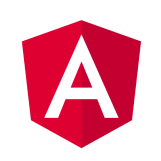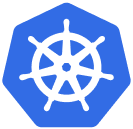Case study
90-Second Declaration: Full Customs Clearance Automation
Stack
DURATION
TEAM SIZE
Key Results & Value:
- Processing Efficiency: Customs clearance declarations, which previously took hours of manual effort, are now drafted and pre-processed in less than 90 seconds, achieving an estimated 90% reduction in processing time per declaration.
- Operational Availability: The cloud-native architecture provides users and partners with 24/7 accessibility and high reliability, moving away from traditional broker hours and ensuring 99.9% uptime.
- Compliance & Risk Reduction: Seamless, complex integrations with all critical government systems (including CDS, CCS-UK, CNS, and DEFRA) ensure 100% data compliance and full auditability for every transaction.
- Cost & Overhead Reduction: By unifying fragmented internal processes and automating administrative logistics, the platform is projected to reduce overall administrative overhead and operational costs by over 30%.
Our Client:
The Challenge:
The startup identified critical pain points in traditional business operations and customs clearance:
- For Business Process Management: Many organizations struggled with inefficient, fragmented internal processes. This led to wasted time, increased operational costs, and a lack of data-driven insights for improvement. The need was for a unified platform to model, automate, and monitor workflows
- For Logistics Automation: International trade was plagued by manual, time-consuming, and costly customs clearance procedures. Exporters, importers, and intermediaries faced significant administrative burdens, potential delays, and a lack of real-time visibility, leading to supply chain disruptions and financial drains. The challenge was to create an automated, expert-driven solution for customs processes.
The Solution
Business Process Management Redefined:
This powerful BPM platform empowers organizations to achieve peak operational agility through:
- Process Modeling & Automation: A user-friendly interface allows businesses to visually map out their workflows and automate repetitive tasks, ensuring consistency and accuracy.
- Performance Monitoring & Optimization: The platform provides real-time tracking of process performance, identifying bottlenecks and offering data-driven insights for continuous improvement.
- Collaboration & Communication: Facilitates seamless team collaboration with integrated communication and document-sharing features throughout the process lifecycle.
Automated Customs Clearance for Global Trade:
This innovative platform transforms complex customs procedures into a simple, efficient process:
- Automated Declarations: Users can send commercial invoice details via email or API. The platform then validates the data against extensive business rules, pre-processes documents, and drafts customs clearance declarations in less than 90 seconds.
- 24/7 Availability: Provides continuous service, eliminating reliance on traditional broker hours.
- Data Protection & Auditability: Ensures high-level data security and provides full auditability of all customs processes.
- End-to-End Visibility: Offers complete transparency across the supply chain with email notifications on declaration status, enabling real-time tracking.
- Multi-Modal & Commodity Support: Handles various freight types and a wide array of commodities for both UK imports and exports.
The Complexity:
The development of these platforms presented significant challenges:
- Enormous Data Volumes: Managing and processing large volumes of transactional and historical data requires robust database solutions and optimized data handling.
- Government System Integrations: The logistics platform demanded complex integrations with numerous critical government systems, including CDS, CCS-UK, CNS, MCPIPAFFS, and DEFRA, ensuring data accuracy and compliance for customs declarations.
- Extensive Business Rules: Maintaining and updating a vast and intricate set of business rules across development, testing, and production environments, tailored for each customer’s specific import/export needs, was a continuous challenge.
Key Technologies Utilized:
Backend:

Golang (Go)

MongoDB

REST APIs

GraphQL
NATS

gRPC
Frontend:

Angular

RxJS

Nx
Infrastructure:

Kubernetes

AWS
Other:

Open API

Michael Babylon
Sales Director, Europe
Let's talk!
Latest News
The pace of innovation is no longer cyclical; it’s continuous. Startups launch globally overnight. Enterprises deploy features weekly instead of quarterly. AI accelerates everything to a level even seasoned technologists didn’t see coming.
The year 2026 marks the end of the AI experimentation era and the beginning of what we call the Architectural Imperative.
The AI landscape has evolved from isolated Large Language Models (LLMs) to autonomous multi-agent systems that plan, decide, and act across an organization’s digital ecosystem.
In 2025, AI is the engine of modern business value, driving significant gains in developer productivity and operational efficiency.
In 2025, AI is the engine of modern business value, driving significant gains in developer productivity and operational efficiency.
Choosing the right CRM system for your healthcare business can feel like a high-stakes decision.
Today, a well-chosen CRM system is more than just software – it’s a strategic asset that can transform your business.
We’re discussing HIPAA, the law that safeguards patient data. It’s not just a good idea to follow these rules – it’s a legal necessity.
Every day, another headline screams about AI and software development. We see phrases like “AI writes code,” “AI designs websites,” and the ever-present “AI replaces programmers.”
At Insoftex, the next leap in enterprise AI isn’t just about faster processing or bigger models; it’s about achieving Contextual Intelligence.
In today’s super-connected world, keeping your business safe online isn’t just an IT thing anymore – it’s a top priority for your whole company.
This guide is your friendly map to understanding what makes San Francisco such a unique tech playground. We’ll also highlight some of the key players who are literally shaping the future of technology.















